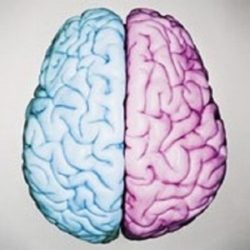From a relatively young age, I always had a strong sex drive. Even in elementary school I found myself very attracted to various girls and even female teachers at times. After losing my virginity in high school, sex became one of the most important things in my life. I absolutely loved it, and couldn’t imagine life without it. If someone offered me a million dollars, and all I had to do was to not have sex for a year, I would have told them to take a hike without a second thought. (I think if this hypothetical time period was lowered to a couple months, I would have considered it. Likely it would have had to be less than that for me to be confident I could hold out!)
I eventually did marry in my mid-twenties. My wife was just 19 and had a healthy sex drive, too. We experimented and eventually ended up getting into swinging after we’d been married around ten years. Some people have their relationships ruined from swinging, but many, many do not. Although there were occasional minor jealousy issues, we were successful in the lifestyle. I loved it because my sex drive was so high that I almost always wanted to have sex multiple times per night, but my wife was usually satiated after one big-O. Having other partners around for me was a good thing. I would usually be ready for a second round within minutes of a first round… sometimes less! On average, I had an orgasm at least 6 or 7 times a week.
After we’d been swinging a few years, I took Cipro. I took it a few more times over the next couple years. Looking back I realized I had some minor symptoms before the straw that broke the camel’s back. The third time I took it, I had a severe reaction that affected many systems in my body, but mostly my tendons and nerves. Of course, sex took a back seat for the next few months. About five months or so after my reaction, I was still in extremely bad shape (in fact I still am today, about five years later), but I suddenly realized I hadn’t had sex in months. My wife and I tried. I was able to perform despite the pain and did find it enjoyable. I thought this might “jump start” my sex drive and sex life again, but it didn’t. It was just obvious I didn’t have the drive I had just six months earlier.
I told my doctor this and he ran a testosterone test on me. My levels were under 200 (250 is considered the low end of normal). Now I don’t think I ever had this level tested before, but I’m pretty sure it was at or close to 1,000 (the high end of normal) based upon my sexual history. He offered me some testosterone supplements. I tried this for a little while and it did help somewhat. Slowly, my sex drive recovered a bit.
Now, some five years post Cipro, I like to have an orgasm about 3 or 4 times a week, and there’s no way I can perform twice in a row. My swinging days are over. I used to work out often and was proud of my body. Now my muscles have wasted away and I have noticeable nerve damage. I don’t feel desirable, and my own desire for sex is probably only about 20% of what it once was.
Although my desire for sex has diminished, I still miss sex a lot. I miss wanting it more. I miss my old friends from the swinging societies and having group sex. I still have a good sex life with my wonderful wife, which is more than many more unfortunate floxies have, but sometimes I’m still bitter about what I’ve had to give up.
Participate in Research
Hormones Matter is conducting research on the side effects and adverse events associated with the fluoroquinolone antibiotics, Cipro, Levaquin, Avelox and others: The Fluoroquinolone Antibiotics Side Effects Study. The study is anonymous, takes 20-30 minutes to complete and is open to anyone who has used a fluoroquinolone antibiotic. Please complete the study and help us understand the scope of fluoroquinolone reactions. To share your fluoroquinolone injury story, send us a note from this link: Write for Us.
What Else Can I Do To Help?
Hormones Matter is completely unfunded at this juncture and we rely entirely on crowdsourcing and volunteers to conduct the research and produce quality health education materials for the public. If you’d like help us improve healthcare with better data, get involved. Become an advocate, spread the word about our site, our research and our mission. Suggest a study. Share a study. Join our team. Write for us. Partner with us.
To support Hormones Matter and our research projects – Crowdfund Us.
This post was published originally on Hormones Matter in April 2014.










